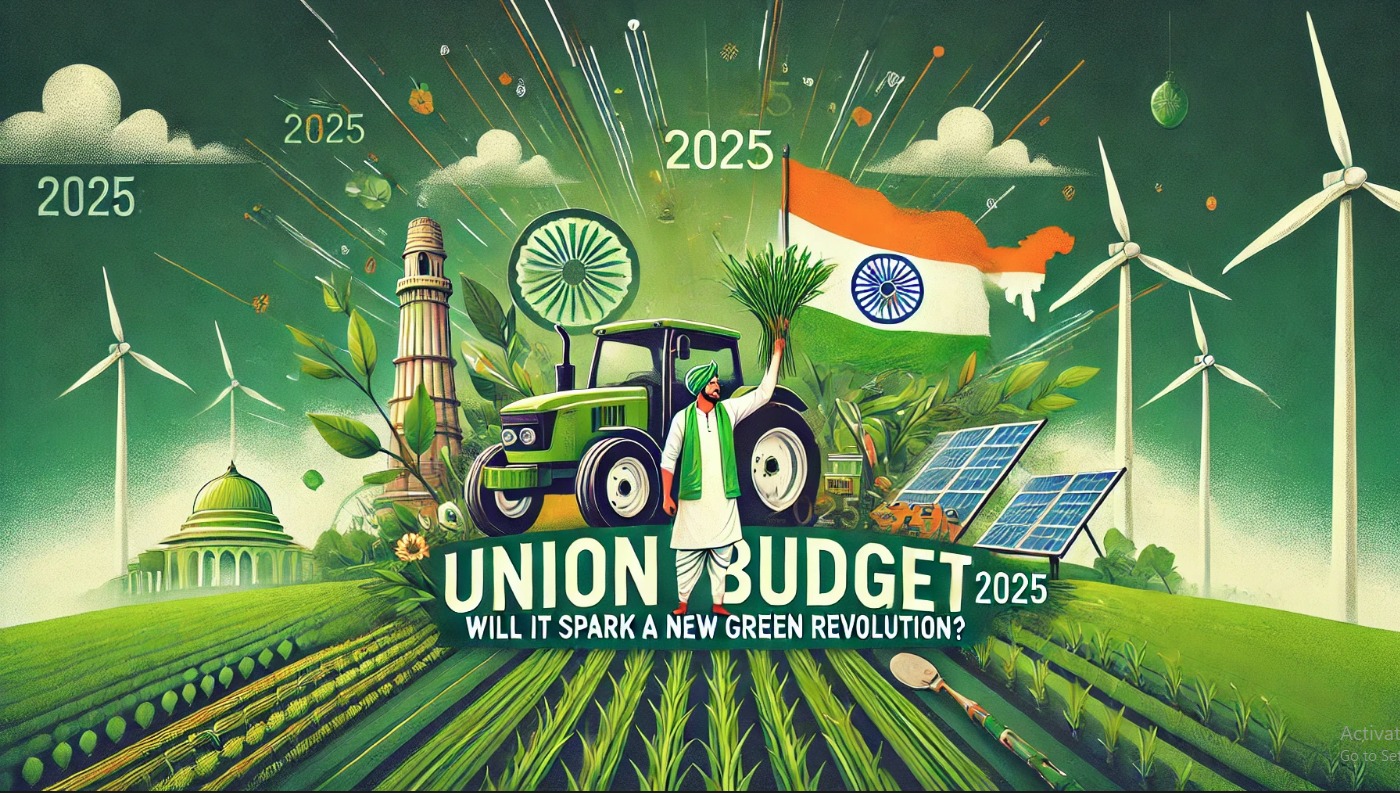Union Budget 2025: Will It Spark a New Green Revolution?

As Finance Minister Nirmala Sitharaman gears up to present the Union Budget 2025 on February 1, 2025, there is palpable anticipation across sectors. The spotlight, as always, remains on India’s agriculture—a critical driver of the economy and livelihood for millions. This year’s budget is expected to address pressing concerns for farmers while offering investment opportunities in this vital sector.
In this article, we explore how the agriculture sector has performed, identify its key challenges, and discuss what measures the government might introduce to drive growth.
The Backbone of India’s Economy
The agriculture sector contributes around 18% to India’s GDP and supports nearly 55% of its population. By 2025, it is projected to grow to $600 billion. India holds top ranks globally, with the largest cultivation area for crops like wheat, rice, and cotton and leading the production of milk, pulses, and spices. However, challenges such as outdated farming methods, fragmented landholdings, and dependence on monsoons persist.
Government initiatives like the PM-KISAN scheme and Fasal Bima Yojana have provided some relief, yet structural issues remain. Addressing these is crucial for sustainability and achieving a new agricultural revolution.
Sector Performance and Financial Analysis
In FY25, the agricultural sector showed mixed performance. While sequential growth was robust, year-on-year growth was subdued due to a high base effect. Fertilizer and pesticide companies outperformed with substantial revenue and profit growth, thanks to favorable monsoons and increased agricultural activity. On the other hand, tea, coffee, and sugar companies faced challenges like rising input costs and muted export demand.
Despite these challenges, India’s agriculture sector continues to show resilience, driven by government subsidies, export demand, and favorable weather conditions.
Challenges in the Agriculture Sector
India’s agriculture faces several hurdles, including:
- Weather Dependence: Unpredictable monsoons and extreme weather events disrupt crop yields.
- Low Productivity: Outdated techniques and poor soil health limit output.
- Infrastructure Gaps: Inadequate storage, cold chains, and transportation lead to significant post-harvest losses.
- Credit Accessibility: Small-scale farmers struggle to access affordable credit, restricting modernization efforts.
Budget 2025: Expectations and Opportunities
The upcoming budget is expected to focus on:
- Financial Relief: Calls for reducing agricultural loan interest rates to 1% and doubling PM-KISAN payouts to ₹12,000 annually.
- Insurance Reforms: A zero-premium crop insurance scheme to mitigate risks for small farmers.
- Infrastructure Development: Improved cold storage and transportation networks to reduce post-harvest losses.
- Tax Benefits: Exemption of GST on agricultural inputs like seeds, fertilizers, and machinery.
- Export Support: Incentives for agricultural exporters to boost global competitiveness.
Driving Growth with Innovation
Government initiatives like the Soil Health Card Scheme, eNAM, and the Kisan Drone Yojana aim to modernize the sector. Precision farming technologies, including drones for crop monitoring and pesticide spraying, are transforming agriculture. These innovations not only improve efficiency but also create new employment opportunities, particularly for rural women.
Conclusion
India’s agriculture sector stands at a crossroads. With strategic investments, policy reforms, and favorable budgetary announcements, it has the potential to drive a new green revolution. The Union Budget 2025 offers a critical opportunity to address longstanding issues and propel the sector toward sustainable growth.
Stay tuned for live updates and expert analysis on Budget Day, February 1, 2025, to explore how the announcements will shape India’s agricultural future.


